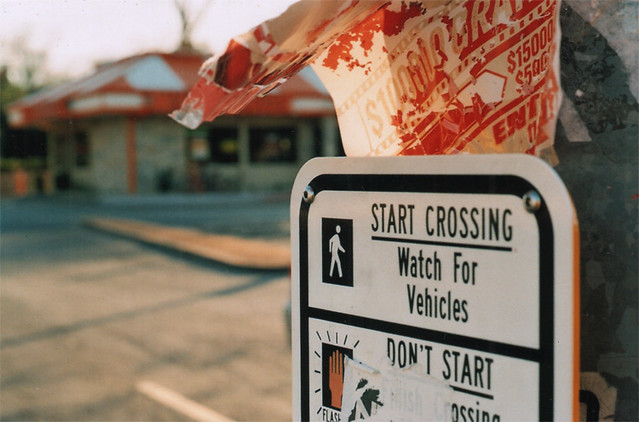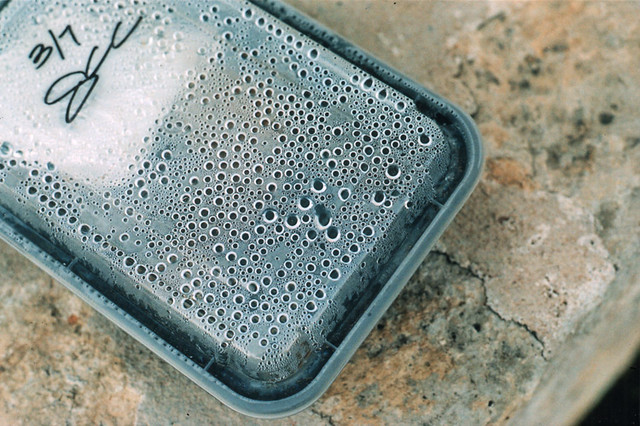tunalegs
Pretended Artist
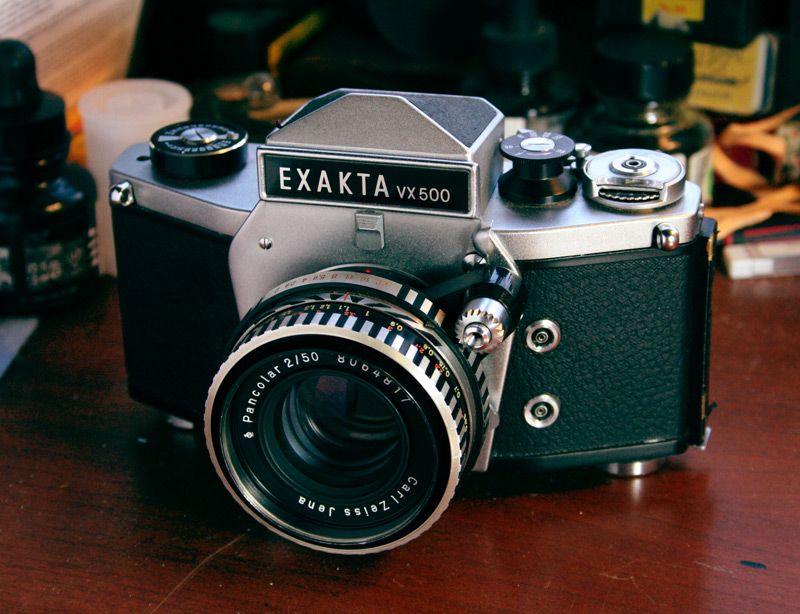
I recently purchased an Exakta VX500 off of ebay for a song. They said the Pancolar lens was hazy - well it wasn't. In fact it's kind of astonishingly clean for its age with no internal dust or oil on the aperture blades. I only noticed two very tiny scratches on the front element far away from the center. They also said that the camera shutter was sluggish. Well they got that part right.
I put a drop of naptha in the shutter dial and this seemed to revive it long enough for me to shoot a test roll. But almost immediately after the roll was finished the shutter began to squawk, so I knew I'd have to have to actually get inside the thing to fix it right.
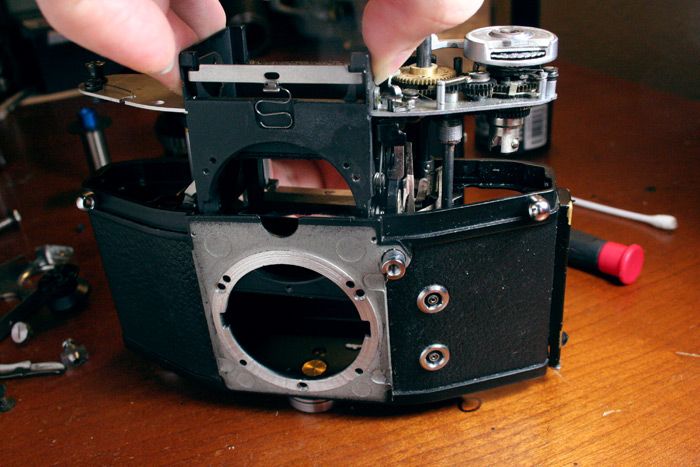
An interesting thing about the Exaktas is that the guts all lift out as a module. I don't know why nobody else built cameras this way since it's quite ingenious. The body is cast as one piece which means that once the film rails and lens throat are machined, there's no way for the film plane and lens mount to go out of alignment - no need for shimming ever (well unless you drop the thing off a building or something). It certainly beats the old Prakticas where the mirror box is cast as part of the chassis. Nor does it require all of the shimming needed for the contemporary Edixa with its removable mirror box and bolt in film gate. Although I haven't figured out how they adjust the ground glass or mirror to make sure the focussing screen matches the film plane 😕
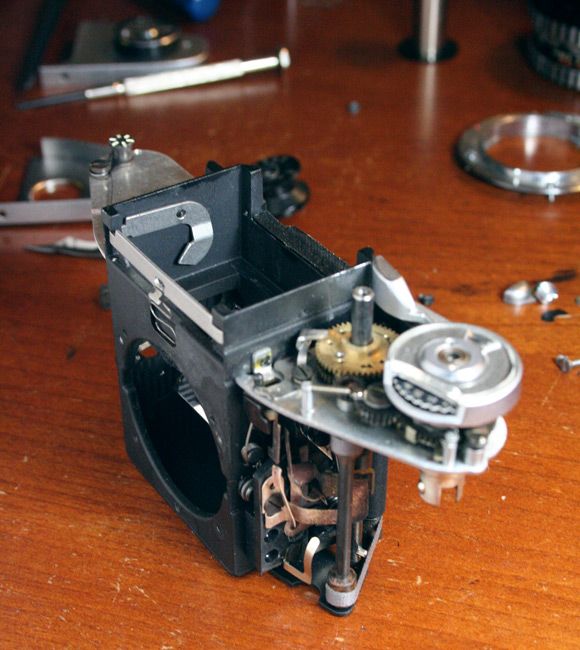
The insides were actually pretty clean, so I didn't have to clean them off at all. You can see most of what makes the Exakta tick on this end. Since there's no slow speed escapement on the VX500, it is sparred the most complicated and fiendish part of the Exakta beast - which normally lives on the other side of the mirror box. That bit with the white lines on the far end is the film advance indicator. A little rubber wheel that rides on the top of the film cassette spins it around so you can see that the film is advancing properly. It may seem pointless and redundant, but since the rewind crank is clutched, it never moves until you rewind the film - so the indicator is actually pretty reassuring.
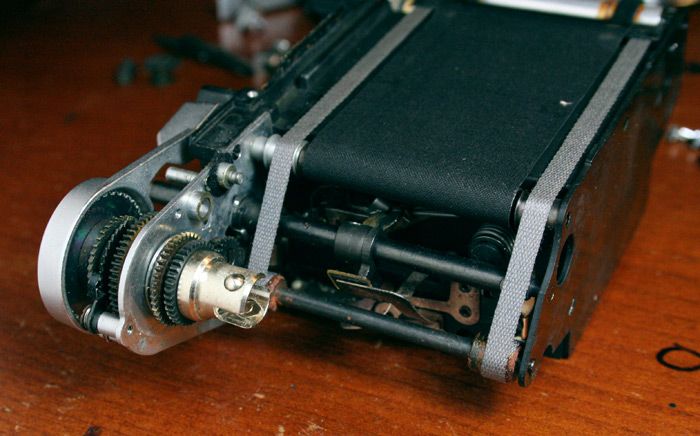
Here's another view that better shows the workings. As I cleaned and oiled the spindles, I noticed a bit of rather questionable shutter engineering. You'll notice that the light colored shutter ribbons travel over what appear to be two metal drums where the ribbons change direction. These pieces are in fact riveted solidly to the camera chassis. They don't rotate. What could they have been thinking!? There's already an axel there for the curtain drum in the middle, conceivably it would have cost less to have these rotate freely on that common axel than to have them fixed solidly in place? Oh well I'm sure they knew better than I know.
You can also see the cam for the shutter sync. The edixas also used this type of mech, until the mid 60s when they moved the contacts into the bottom plate so the sync could be adjusted and tested without having to take the camera completely apart.
After cleaning and oiling the spindles everything was working smoothly and sounding right, so I put the guts into the body and checked the shutter with a TV to see if it was in the ballpark. 1/500 still seems erratic, but everything else looked right on and consistent with no fade or capping apparent. Plus the squawk was gone and everything was operating smoothly. Everything's back together now and I can't wait to get the next roll through.


